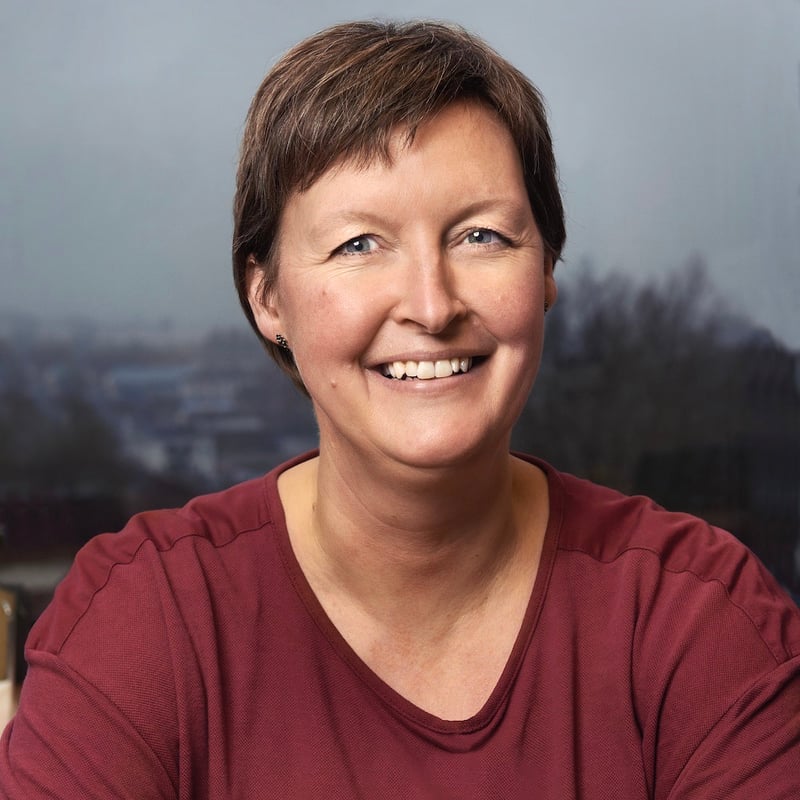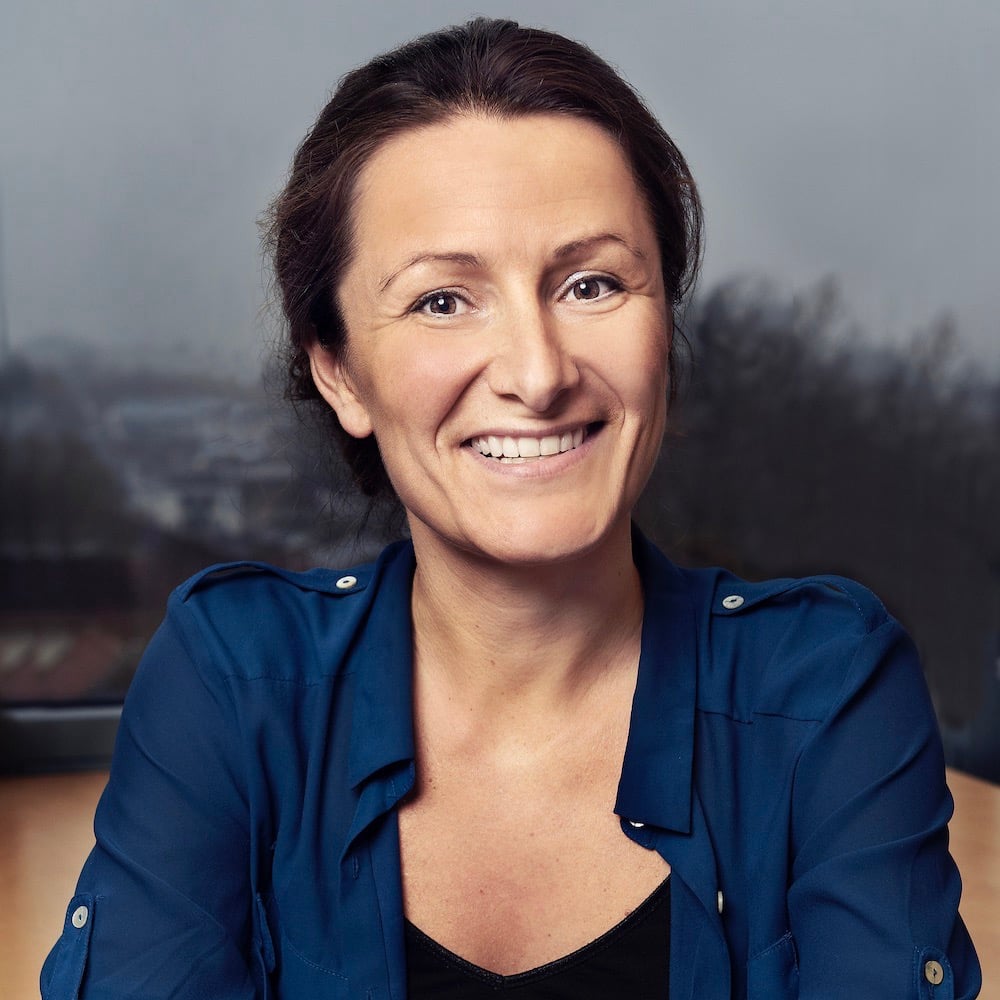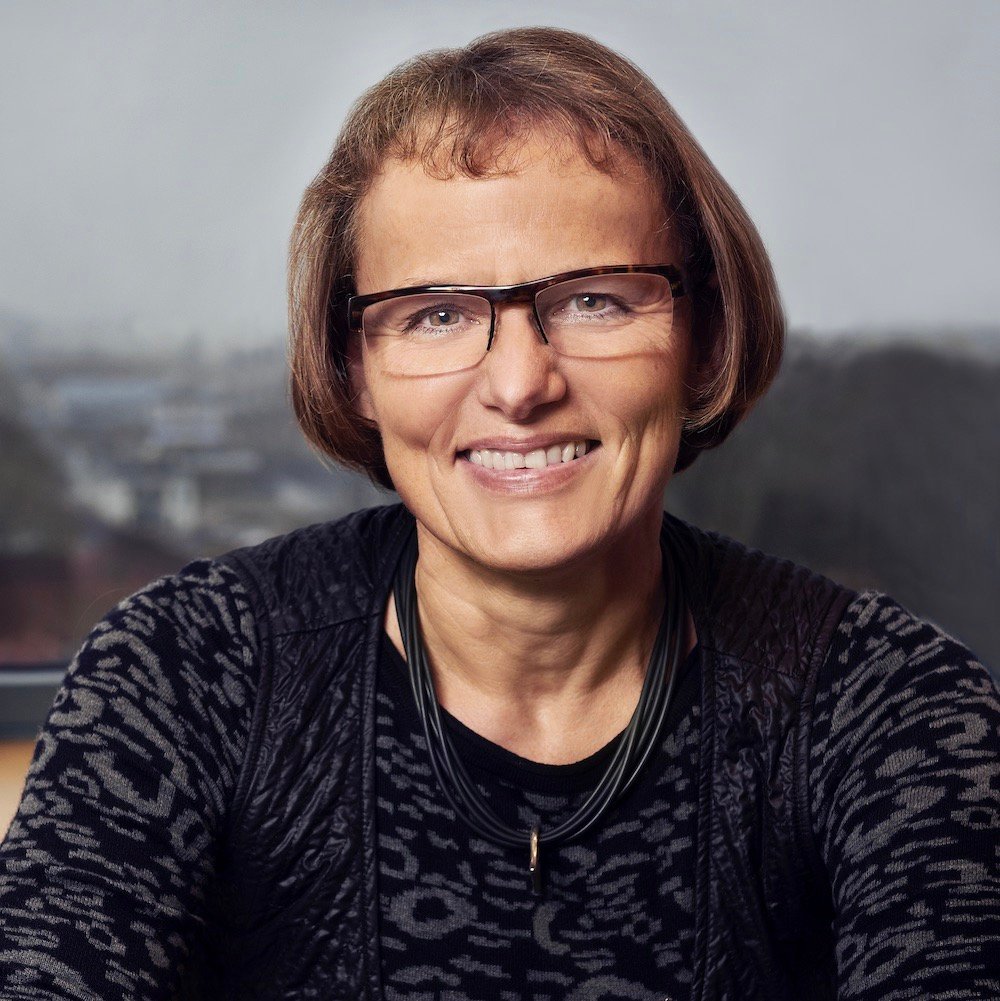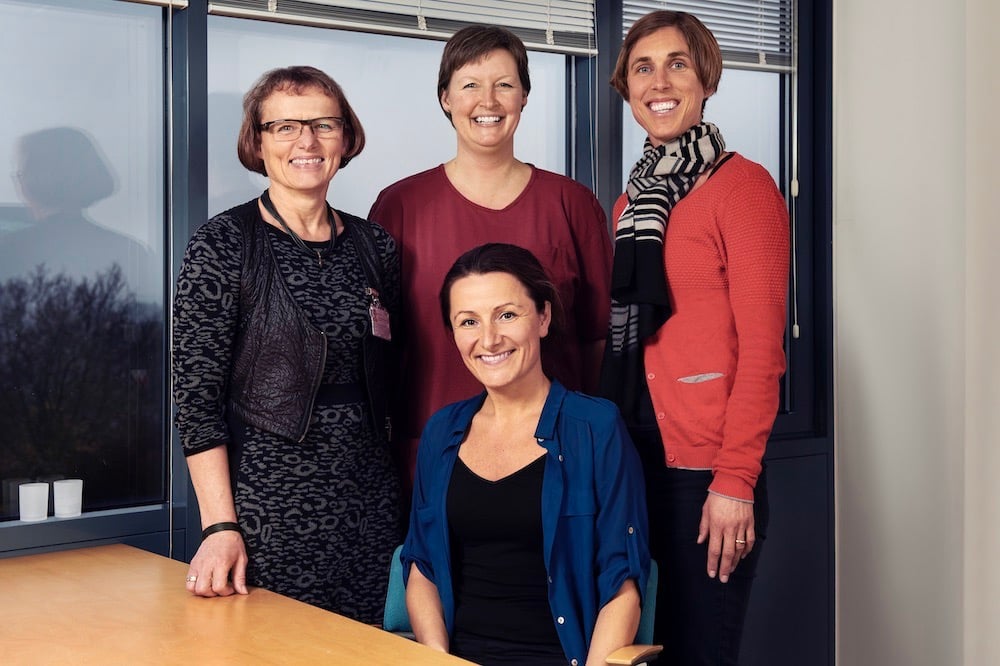At the Clinic for Early Neurorehabilitation, systematic sensory stimulation measures are an integral part of the rehabilitation efforts for patients with acquired brain injuries. The latest addition is the Ergonomic Circadian Lighting, which is now fully implemented and functioning - and will be included as part of the clinical research going forward.
The project at Hammel Neurocenter involves employees at all levels - from the interdisciplinary staff in the department to the research unit and clinic management. For the staff, the new sensory stimulating measures mean changed work routines and new opportunities to care for the patients. Lena Aadal, PhD and research responsible nurse, who is in charge of the research involved, aims to serve the best interests of the patients and qualify the efforts through national collaboration in the field. The management has taken the initiative to explore new avenues in the field of stimuli in order to support the interdisciplinary rehabilitation efforts through forward-looking qualitative and stringent research in close collaboration with the Research Unit.
From the outset, there has been a strong focus on the implementation of various sensory stimulating measures, including PC screens with information, music therapy, visual observation, image projection, and Circadian Lighting. Subsequently, the article will focus on Circadian Lighting, which has been installed and fully integrated at the Clinic for Early Neurorehabilitation, where the investigations will commence in the near future.
Staff Members
— We introduced Circadian Lighting to our department in May of this year, says Sine Secher Mortensen, the specialist physiotherapist at the Clinic for Early Neurorehabilitation. She continues:
— It took some time for us to adjust to it. Previously, we had traditional fluorescent lights in the ceiling, with dimmers, as well as fluorescent lights above the sink. Our patients need medication at night and need to be turned every other hour throughout the night, so we are in their rooms three to four times each night for 10 to 15 minutes at a time. The Circadian Lighting makes a difference with its soft and wall-mounted night lights that don't disturb the patients. We specialize in early neurohabilitation, and our patients come directly from the neurointensive care unit to stay with us for at least 10 days and up to several months. In our department, we have eight single occupancy rooms and one multiple occupancy room. The Circadian Lighting is installed in rooms 5 and 6, which are single occupancy rooms, as well as room 9, which is a multiple occupancy room with two permanent beds and an acute bed. We use the rooms with Circadian Lighting for our most vulnerable patients who have motor restlessness and trauma.

Emphasis on effective implementation and knowledge sharing
— We have placed great emphasis on introducing Circadian Lighting in the best possible way in our department, where we have 90 staff members. Our implementation has been driven by a project group consisting of two leaders, four specialists, and two regular members. Additionally, we have appointed seven super users of the lighting. We have all received comprehensive training on Circadian Lighting and are actively sharing our knowledge with our colleagues. Our department operates in interdisciplinary teams, including nursing staff, occupational and physiotherapists, speech therapists, neuropsychologists, and social workers. It is crucial that everyone understands the advantages of Circadian Lighting, explains Sine Secher.
A Different Kind of Light
— The challenge of integrating Circadian Lighting into the department is the power of habit - previously, the staff themselves could regulate the light. It is ingrained in us to dim the light when we deem it necessary. We prefer to shield the patient from stimuli to prevent them from going into delirium. But Circadian Lighting should not be used the same way as traditional lighting - it is a completely different form of light. It is programmed to follow the rhythm of the sun, providing bright and powerful light during the day and darkness at night. Circadian Lighting is designed to normalize the sleep-wake cycle - and it is beneficial for our patients. We are part of the research on the effects of Circadian Lighting - and when conducting a project, we need to use the light correctly. We have had Circadian Lighting since May - and I look forward to seeing its effects when the dark time comes. We can already see the difference when it is gray outside - so the effect will become truly evident when autumn and winter darkness settle upon us, says Sine Secher.
Management
The aim is to reorganize the sleep-wake cycle.
The management at Hammel Neurocenter has taken the step to implement sensory stimulating measures based on the assumption of their effectiveness, in the hope of supporting patients' outcomes in interdisciplinary rehabilitation efforts.
— With a patient population where reestablishing the circadian rhythm after acquired brain injury can be challenging, we have sought support, including Ergonomic Circadian Lighting. In the rehabilitation process, our patients are highly dependent on quickly establishing a rhythm of awake and relaxed periods to achieve the best possible outcome from interdisciplinary rehabilitation, says Mette Skjærbæk Svane, Chief Occupational Therapist, about the research project at Hammel Neurocenter.

— The assumptions about the effects of Ergonomic Circadian Lighting on our patients require further validation by the research team. We have great respect for the lack of evidence in the areas we are currently exploring, especially when dealing with brain-injured individuals. Therefore, the setup we have established has been developed in close collaboration with our Research and Development Unit at Hammel Neurocenter. Their expertise in forward-thinking qualitative and stringent research is invaluable. The Research Unit is currently involved in multiple research projects. We aim to approach each project systematically, taking one step at a time, to avoid disrupting future research efforts," she elaborates.
Research
The desire to serve the best interests of the patients
Hammel Neurocenter draws inspiration from the research conducted at the Neurointensive Care Unit NIA at Aarhus University Hospital, focusing on creating an enriching environment for patients with acquired brain injuries. In the NIA project, various sensory stimulating measures such as circadian lighting, directional noise-reducing speakers, music therapy, visual observation, and information screens have been used to support the specialized interdisciplinary approach to patients in the post-traumatic amnesia phase, the awakening phase, and those with cognitive impairments.
In 2013, Hammel Neurocenter received funding to install lighting, sound, screens, and image projection at the Clinic for Early Neurorehabilitation. Ergonomic Circadian Lighting has now been fully installed and integrated, becoming an integral part of future clinical research at the center.
Clinical research on systematic sensory stimulation
Lena Aadal, PhD, and research nurse at the Research Unit at Hammel Neurocenter, is currently working on research projects focusing on circadian lighting as a systematic sensory stimulation. Aadal defended her PhD in 2010, titled "Intensive neuro-rehabilitation understood as learning - development of a didactic model," and has since been involved in several research projects in this field. Alongside her current work, Aadal is also working on multiple project descriptions, including one in collaboration with Hammel Neurocenter, Aarhus University Hospital, Rigshospitalet, and Hvidovre/Glostrup Hospital. The purpose of this study is to examine the effects of an intervention consisting of dynamic circadian lighting, sound therapy, and systematic information on the sleep patterns, agitated behavior, and functional level of patients with severe traumatic brain injury through a controlled study design. Aadal's research is driven by the desire to serve the best interests of the patients and to enhance their care through national and later international collaborations in the field.

Another study aims to investigate and describe sleep patterns in patients with severe acquired brain injury during intensive rehabilitation in an environment with systematic circadian lighting. Additionally, in collaboration with Aalborg University, there is a project focusing on music intervention targeting the reduction of agitated behavior during planning. Lena Aadal, discussing the research projects, states:
— The overarching goal of the research is to serve the best interests of the patients and enhance their care through national and later international collaborations in the field.
Hammel Neurocenter
At Hammel Neurocenter, employees at all levels are involved in the new project with systematic sensory stimulating measures.

From left to right, we have Lena Aadal, PhD, research nurse, Sine Secher Mortensen, specialist physiotherapist, Simone Kellenberger, development and education nurse, and Mette Skjærbæk Svane, lead occupational therapist.
Hammel Neurocenter is a highly specialized neurorehabilitation hospital that has been responsible for the rehabilitation of patients with acquired brain injuries from all over Western Denmark since 2000. The hospital has 93 treatment spaces and treats around 800 patients annually.
Research and education are highly prioritized at Hammel Neurocenter, which has a wide collaboration with other research-based neurorehabilitation units both in Denmark and abroad.
In the spring of 2013, Hammel Neurocenter was granted university clinic status.

